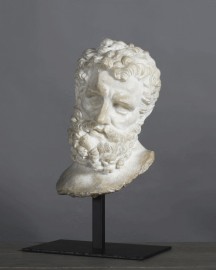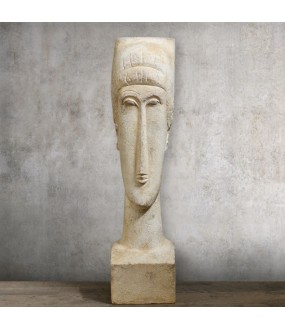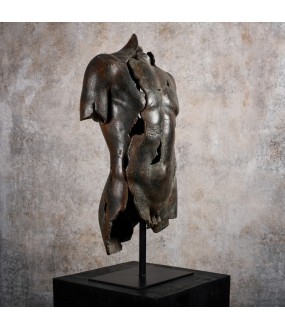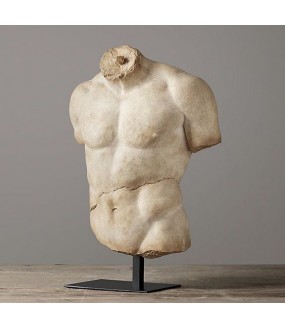STYLES
La Maison Arteslonga likes to explore and bring together styles and eras in a desire for harmony and softness.
Modernist
Minimalist Raw
Luxury Movie Star 50s
Timeless
Orientalist
Baroque
Proustian Era
Greco-Roman
Cabinet of Curiosities
Ethnic Chic
-
Emperoro August Bust
€1,040.01Sculpture bearing the likeness of Auguste, fragment of an original statue probably dating from 20 BC and preserved in the Louvre Museum, this statue is a tribute to the glory of this great Emperor who brought peace and order to Rome.
Composite materialH60 x 43 x 25 cm
-
Thinker Bust, Statue
€360.00Bust of thinker.
Material: composite - perfect imitation of the old natural stone.
A current craft piece of remarkable beauty that can be exposed outdoors thanks to its protection against the sun and bad weather.
A majestic piece of a very beautiful presence.
-
Reproduction of Head Bust, Tribute to Modigliani
€420.00Bust of a woman made in terracotta.
It is a reproduction of the head created by the painter and sculptor Modigliani in 1912 and which is present today at the Mineapolis Institute of Art.
Protaganist of the vibrant Parisian artistic community around 1910, the Italian Amedeo Modigliani sought to establish a new sculptural language, largely inspired by African, Greek and ancient Egyptian examples.
The current Head was one of seven exhibited at the Salon d'Automne in Paris in October 1912.
A few months earlier, it had been photographed in the artist's studio, making it one of his best-documented works.
Modigliani wanted the heads to be part of “columns of tenderness” within a primordial “temple of beauty” which was not realized.
According to the account of his close friend Jacob Epstein, Modigliani used to place candles on these heads at night. Driven by marijuana, he affectionately embraced the totemic and luminous sculptures
We can specify that this shape of head is strongly inspired by African masks made by tribes in Gabon, Angola or the Republic of Cogon which have the particularity of the elongation of the head such as for example the Ngil de Fang masks which are generally characterized by a face made up of high orbital cavities on each side of a long straight nose separating two fine eye incisions.
Material: terracotta.
A very beautiful contemporary artisanal work for this beautiful object of Art.
For a refined and eternal interior decoration.
-
Fragment Statue of Hermes, Bronze Patina
€1,104.00Large reproduction or adaptation of an ancient Greek torso where we recognize Hermes son of Zeus and messenger of the Gods
It is the fragment of a statue from the imperial period, probably created around 350 BC. J.-C.
The bust presented here is a so-called "bronze fragment" version. Very elegant oxidized bronze patina.
Material: composite and marble powder
A very beautiful current craft work for this beautiful object of Art.
For a refined and eternal interior decoration.
-
Antique Statue of Hercule H57cm
€590.00Reproduction of a fragment of a Hercules statue dating from the early 3rd century, attributed to the sculptor Glycon of Athens.
-
Hercule Statue
€1,320.00Superb ancient Greek statue of Hercules handcrafted in composite material (resin).
This fragment of a bust comes from the reproduction of an original bronze statue (now lost, created by the Greek sculptor Naucydès at the beginning of the 4th century BC), the translation of which is currently kept in the galleries from the Louvre Museum.








